Sleep Like A King – Style, Sheets, & Comfort
My recent international flight from Ukraine was a nightmare.
Think 18 hours in the air, a 17 hour layover (complete with sleeping in the airport), topped off with a 5 hour drive home being jet-lagged by an 8 hour time difference. Oh – and did I mention my wife and I had our three young children with us.
Yea – lots of fun. So what does this have to do with Style, Sheets, and Comfort?
Sleep Like A King – Style, Sheets, & Comfort
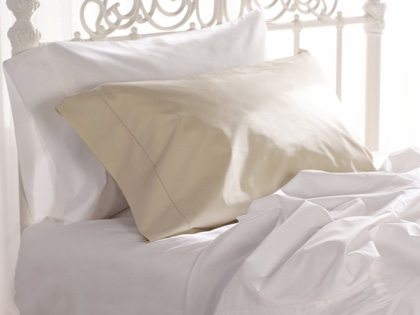
Well – one of things that kept us motivated during our 40+ hour travel debacle was the thought of sleeping in our extremely comfortable bed.
You see, years ago I made a very smart purchase and bought a king size memory foam mattress. And a few months ago my friend Steve, owner of Vero Linens, sent me a set of the finest bedding I’ve ever owned.
This killer combination of 1) a good mattress and 2) premium linens makes our bed the most comfortable place in North Central Wisconsin.
The goal of this article is to help you understand why quality bedding is worth spending a bit more for.
It is my experience that you get more for your dollar out of a high quality premium set of sheets than you do from an inexpensive cheaply-made set.
Heck – the only thing I remember talking to my wife about once we were in bed and the 40+ hour trip was over was how happy we were that we were home and how comfortable the bed is. Boom – lights out. I slept for 8 solid hours.
The fact is we spend about 1/3 of our lives asleep. That’s a lot of time — yet most people put hardly any thought into their sleeping arrangements.
It’s worth being a part of the minority on this one. A little education and a few smart investments can have you sleeping like a king, rather than a commoner.
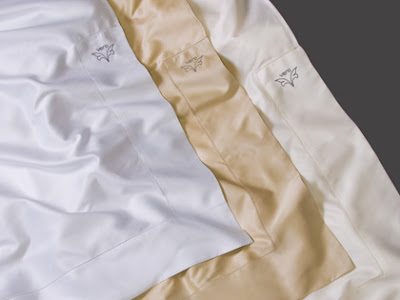
Sleep Like A King – Style, Sheets, & Comfort
Why Spend Extra on Bedsheets?
It’s easier to talk a man into buying a $1,200 suit than it is to sell him $1,200 in bedding. The value of a suit is obvious in its construction, its material, and in many cases simply the status it conveys. Sheets and covers, less so.
But don’t fall into the trap of ignoring your bedding – especially if you plan on enjoying your time between the sheets.
Your bed plays more of a role in your life than you may be giving it credit for, and not just in the quality of your sleep. Here are three solid reasons to spend a little more than the minimum possible on bedding:
- Good sheets means better sleep. This one’s impossible to get away from. If you’ve ever been to a fancy hotel where slipping into the bed is a luxury experience on its own, you know the difference that quality linens can make. Now imagine that as your nightly experience, instead of a travel luxury, and you’ve got a good sense of how soundly you could be sleeping.
- Your bed isn’t just for you. Whether you have a wife, life partner, or just the occasional guest to share it with, your bed is probably going to see someone besides you at some point. You don’t want her experience to be coarse sheets and a limp comforter. Have linens and quilts that can make a good impression even on a surprise visit with no time for tidying up.
- Quality linens last longer. There comes a point where savings up front turn into long-term expense. The cheapest sheets out there (usually from places like Target or Walmart) are still half the price of a good set or more, and they last far less than half as long. You’ll be lucky to get two or three years before they’re ratty, while a well-made set can go for more than a decade. The problem with using poor grades of cotton is the individual fibers are shorter and they are more prone to fray or stick up in the yarn, this causes the coarseness as well they are more prone to pilling.
Now does that mean you should run out and buy the $1000 imported Italian sheets at Nieman Marcus? Not necessarily (though it’s not a bad investment if you really get good quality and if you have that kind of discretionary cash lying around).
But you should approach linen shopping much the same way you approach clothing purchases: with an eye to value, not to price.
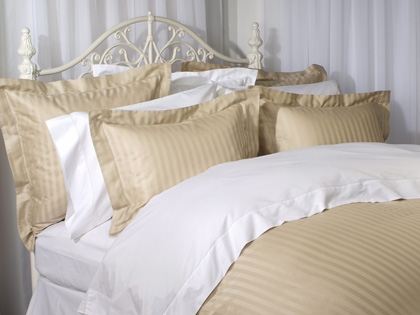 Building a Bedroom “Wardrobe” — What to Expect to Buy
Building a Bedroom “Wardrobe” — What to Expect to Buy
So you’ve made up your mind to sleep easy, have a presentable bedroom, and save some money in the long run. Great — but what do you actually need to buy?
Sheets
The inner layer (unless you use a mattress pad), sheets are the cloth that spends the most time against your skin at night. That makes quality bedsheets one of your highest priorities.
A freshly-cleaned pair of sheets is good for about a week or two at the most before it needs to be changed and washed. Washing doesn’t put too much wear and tear on them, particularly if you line dry, but you still want a rotation to extend the lifespan and to give yourself a few color choices:
- 2-3 sets (top and bottom) light cotton or linen sheets for warm weather
- 1-2 sets cotton flannel sheets for winter use
Fitted sheets are not mandatory. They’re convenient (to put on, anyway — folding them neatly is another matter) and they stay tucked under the mattress more easily, but don’t be shy of buying a top-and-bottom set where neither sheet is elasticized. They’ll still stay put if you tuck them firmly, and the elastic is often one of the first things to wear out on a fitted sheet.
Be willing to make a big investment on the sheets. They’re the bedclothes you’re going to have the most exposure to, so lower quality impacts you more negatively here than anywhere else.
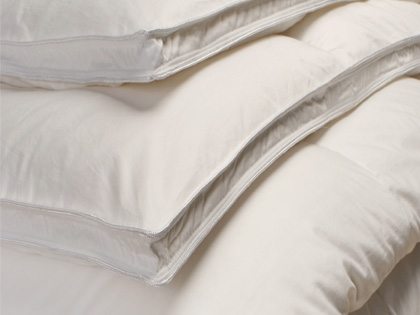 Comforters
Comforters
Comforters are the medium-weight, filling-stuffed blankets typically used as outer layers in warm months and under-layers in the winter. You don’t need one — it’s possible to go straight from warm sheets to a down quilt and duvet — but it’s nice to have in much the way that a fall jacket is.
Two is optimum, however you can get by with just one.
Down Quilts and Duvets
These are two separate items that get paired together.
A down quilt or down comforter is, as the name implies, a blanket stuffed with warm goose down. It’s big, fluffy, and provides most of its warmth by trapping hot air inside the cover.
The duvet is the cotton or linen cover that slips over this mattress-like blanket. It provides an outer layer that’s softer on the skin and can be taken off for easy washing. Having one saves you from washing the quilt itself, a process that will eventually compress the feathers and reduce the warmth in provides.
One down comforter can last for decades, but you’ll want to change duvets about as frequently as you change sheets:
- 1 down quilt, down comforter, or other feather-stuffed blanket
- 1-3 sturdy cotton duvets
The blanket’s own exterior fabric should be plain and soft. Wrap it in a smooth duvet for both warmth and comfort, to say nothing of easy cleaning.
Patch Quilts, Afghans, and Other Blankets
The feather-stuffed quilt and the light comforter are the best purpose-specific blankets, but in cold weather many people like to add a layer of wool or quilted cotton as well.
These are often considered “folksy” options (largely because they were historically made and used by people who had no access to fancier blankets), and you often see them gracing bed-and-breakfasts and guest cabins.
They’re not mandatory, but it’s nice to have a few in your closet, especially as backup comforters for the guest bed, should you have one.
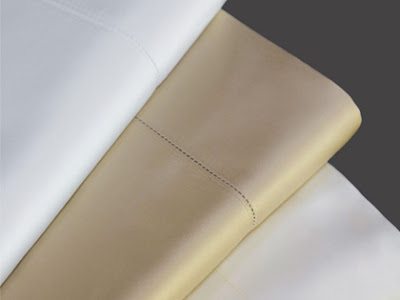 How to Buy Quality Sheets and Other Bed Linens
How to Buy Quality Sheets and Other Bed Linens
The phrase “linens” is in and of itself a bit misleading; most sheets and other bedclothes these days are made from cotton. Linen sheets are very light and breezy, but also prone to wrinkling and harder to care for — they were ideal when families had servants to do the washing up, but aren’t as good for the single-family or bachelor household.
So how to buy good sheets and blankets? There are a couple things to consider:
1. Thread Count is Bunk
You’re going to see a lot of advertising hyping the “thread count” of the linens.
Ignore it.
Thread count is — in theory — the number of threads per square inch of fabric. The more threads, the finer they must be, right?
Well, not really. Cheap, coarse threads bundled so tight they bunch and break can fit more per square inch than very fine, luxurious threads woven in a soft, even texture, and even that’s assuming the manufacturer is being technically honest in the measuring.
In some cases, the “thread count” is counting the individual fibers that make up each thread as separate threads, which can triple or quadruple the thread count. So those ultra-luxurious, 1,200 thread-count sheets you see probably aren’t substantially finer than a well-made 200 thread-count.
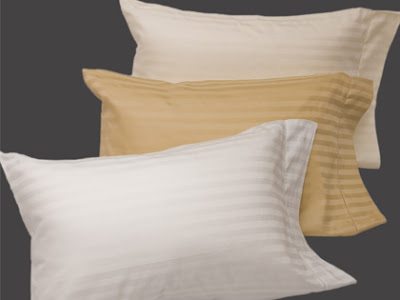 2. Cotton Quality Counts
2. Cotton Quality Counts
What does matter, vastly more than any threads-per-inch measurement, is the actual stuff the threads are made from.
Long-staple cotton is the gold standard of textiles. It comes primarily from Egypt, though there are varieties in the American Southwest and Sea Islands, and it has long, smooth fibers that twist together to make threads.
It’s also quite rare. Anywhere from 85% – 95% of a year’s cotton harvest is short-staple, most years, sold for every use you can imagine and quite a few you can’t (cotton-based absorbent pulp for disposable diapers, say). That leaves a very small niche market for Egyptian and other long-staple cotton.
This is the real stuff. You want sheets made not just from Egyptian cotton, but from 100% Egyptian cotton — legally, manufacturers can sell you “Egyptian cotton sheets” with only a small fraction of the cotton actually sourced from Egypt. Those luxury sheets at the price that’s too good to be true probably are, in fact, too good to be true, unless you can get a guarantee that it’s 100% Egyptian or other long-staple cotton.
3. Country of Manufacture Also Counts
Most sheets sold in the United States — like almost everything these days — are made in China.
There are some perfectly good sheets available that were made in China, too, but there are also some very bad ones. Mass production always comes at the cost of some quality, and most importers are more focused on the “mass” than on the “quality.”
Smaller companies that specialize only in making bed linens are your best bet. Many of the best are Italian, which is why you’ll see the upper end of department store linens filled with names like “Quagliotti” and “Bagni Volpi Noemi.”
Actual linen bedding also comes from Italy, and from Dutch and Irish companies that have been hand-making it for centuries. It’s costly and hard to care for, but a serious luxury product and very comfortable in warm weather.
Conclusion: Spend a Little, Get a Lot
At the end of the day, no one’s going to beat the store brands at Target or Walmart for price. That’s their business; that’s what they do. They beat everyone else on price.
But what you get for your money is a much, much lower value. The product isn’t as comfortable, doesn’t look as good, and won’t last nearly as long.
Take your time and build your bedroom collection slowly. It’s just as much an investment as your wardrobe — and you spend nearly as much time using it, too. Start with a couple of high-quality sets of sheets and go from there.
You’ll spend a little more. But you’ll get a lot out of your money.
Sleep Like A King – Style, Sheets, & Comfort







